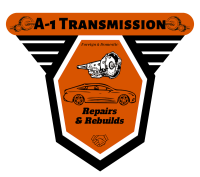Servicing your vehicle's transmission is a critical component of overall maintenance, especially when dealing with older, high-mileage transmissions. However, it's equally essential to approach this task with caution to avoid causing unintended damage.
In this comprehensive guide, we will explore in detail the safest ways to service your transmission, emphasizing the use of partial fluid exchanges and regular filter changes. By incorporating these methods into your maintenance routine, you can improve fluid quality without stirring up debris that might harm your transmission, ensuring optimal longevity and performance.
Understanding the Risks of Power Flushes:
Power flushes have become a common method for transmission servicing, but they can pose risks, particularly for older transmissions. The forceful nature of a power flush has the potential to dislodge accumulated debris in the transmission system, leading to unintended harm.
Older transmissions, which may have weakened components, can be particularly vulnerable to the intensity of a power flush, potentially resulting in accelerated wear and damage.
Signs of Previous Damage from Power Flushes:
Before delving into the safest ways to service an older transmission, it's crucial to recognize signs that previous power flushes may have caused damage. Some indicators include:
Slipping Gears
Transmission slipping between gears could be a telltale sign of damage caused by previous power flushes.
Unusual Noises
Grinding or whining noises during gear shifts might indicate wear and tear caused by aggressive flushing.
Overheating
Damaged transmissions may struggle to regulate temperature, leading to overheating. Monitor your transmission temperature gauge for any irregularities.
Leaking Fluids
Damaged seals and gaskets resulting from forceful flushes can lead to fluid leaks. Check for any signs of transmission fluid puddles beneath your vehicle.
The Safest Approach: Partial Fluid Exchanges and Filter Changes:
To avoid the potential pitfalls of power flushes, opt for a safer approach with partial fluid exchanges and regular filter changes. Here's a detailed guide to implementing this method:
Partial Fluid Exchanges:
Identify the specific type of transmission fluid your vehicle requires, and ensure you have the correct replacement fluid.
Securely lift the vehicle following all safety guidelines to access the transmission pan.
Remove the transmission pan and drain a portion of the old fluid, ensuring not to empty the entire system.
Replace the drained fluid with an equal amount of new transmission fluid.
Repeat this process over several maintenance intervals, allowing the new fluid to gradually replace the old without disturbing debris.
Regular Filter Changes:
Locate the transmission filter, usually housed within the transmission pan.
Remove the filter and replace it with a new, compatible filter.
Ensure the filter replacement aligns with your vehicle's maintenance schedule, typically every 30,000 to 60,000 miles.
Regular filter changes prevent debris buildup and enhance the efficiency of your transmission.
Benefits of Partial Fluid Exchanges and Filter Changes:
Implementing partial fluid exchanges and regular filter changes offers several advantages for maintaining an older transmission:
Gradual Debris Removal
Unlike power flushes that can dislodge debris abruptly, partial fluid exchanges allow for a gradual replacement of old fluid, minimizing the risk of stirring up harmful particles.
Extended Transmission Life
By adopting a careful approach to fluid maintenance, you can extend the life of your transmission components, reducing the likelihood of premature wear and tear.
Improved Performance
Fresh transmission fluid and clean filters contribute to smoother gear shifts, improved fuel efficiency, and overall better transmission performance.
Conclusion
When it comes to servicing an older transmission, the key is to prioritize gradual maintenance over aggressive methods like power flushes. Partial fluid exchanges and regular filter changes offer a safer alternative, ensuring your transmission remains in top condition without the risk of unintended damage. By recognizing signs of previous damage and implementing these recommended practices, you can maintain a healthy transmission that contributes to the longevity and efficiency of your vehicle.
In conclusion, meticulous transmission maintenance not only safeguards your vehicle but also ensures optimal performance for years to come. By incorporating these strategies into your regular maintenance routine, you can navigate the challenges of servicing an older transmission with confidence and precision. Remember, a well-maintained transmission is the key to a smoother, more reliable driving experience.
Additional Information:
To further enhance your understanding of transmission maintenance, let's delve into additional aspects that can contribute to the overall health of your vehicle's transmission.
1. Transmission Fluid Types:
Understanding the different types of transmission fluids available in the market is crucial for optimal transmission performance. While some vehicles may use traditional automatic transmission fluids, others might require synthetic or specialty fluids. Consult your vehicle's owner's manual or a qualified mechanic to determine the right fluid for your transmission.
2. Temperature Considerations:
Transmission fluid operates within a specific temperature range to ensure proper lubrication and performance. Excessive heat can lead to fluid breakdown, reducing its effectiveness. Consider installing an auxiliary transmission cooler if you frequently engage in towing or driving in extreme conditions. This additional cooler helps maintain optimal transmission temperatures, prolonging the life of your transmission fluid.
3. DIY vs. Professional Servicing:
While partial fluid exchanges and filter changes can be performed by savvy DIY enthusiasts, there are instances where seeking professional assistance is advisable. Transmission servicing involves intricate components, and a trained technician can identify potential issues that may go unnoticed during a DIY inspection. Professional servicing can also include a more comprehensive assessment of your transmission's health, providing peace of mind and potentially saving you from costly repairs down the road.
4. Transmission Additives:
In the pursuit of optimal transmission health, some vehicle owners may consider using transmission additives. These products claim to improve fluid performance, reduce friction, and extend the lifespan of internal components. However, it's crucial to exercise caution when selecting additives, as not all products are suitable for every transmission type. Consult with automotive experts or your vehicle manufacturer before adding any aftermarket products to your transmission fluid.
5. Transmission Flush Alternatives:
While power flushes can be risky for older transmissions, there are alternative methods that involve using cleaning agents or additives. These products aim to break down and remove deposits within the transmission without subjecting it to the forceful nature of a traditional power flush.
However, it's essential to carefully follow product instructions and, if uncertain, consult with professionals to ensure compatibility with your specific transmission.
6. Driving Habits and Transmission Health:
Your driving habits play a significant role in the overall health of your transmission. Avoid aggressive driving, such as sudden acceleration or heavy braking, as these actions can put additional stress on your transmission components. Additionally, refrain from towing loads beyond your vehicle's capacity, as this can lead to overheating and premature wear.
7. Transmission Maintenance Schedule:
Regular maintenance is key to preserving your transmission's health
and longevity. Adhering to a maintenance schedule tailored to your vehicle's specific needs and usage patterns is crucial. Generally, it's recommended to check your transmission fluid level and condition every 30,000 to 60,000 miles. However, this interval can vary based on your vehicle's make, model, and the type of driving you do. Consult your owner's manual or a trusted mechanic for a maintenance schedule that's appropriate for your vehicle.
Recognizing Early Warning Signs:
Being proactive in recognizing early warning signs of transmission issues can prevent minor problems from escalating into major repairs. Pay attention to symptoms such as delayed gear engagement, difficulty in shifting gears, unusual vibrations, or a burning smell coming from under the hood. Addressing these issues promptly can save you time and money in the long run.
Environmental Considerations:
Environmental factors can also impact your transmission's health. Extreme temperatures, both hot and cold, can affect transmission fluid viscosity and performance. In regions with severe weather conditions, more frequent checks and potentially different types of transmission fluid may be necessary to ensure optimal function.
Record Keeping:
Maintain a detailed record of all maintenance and repairs done on your transmission. This documentation can be invaluable for diagnosing future issues and can be a selling point if you decide to sell your vehicle. It demonstrates to potential buyers that the vehicle has been well-maintained, potentially increasing its resale value.
In summary, the safest way to service an older transmission involves a combination of partial fluid exchanges, regular filter changes, and a comprehensive understanding of your vehicle's specific needs. By avoiding aggressive methods like power flushes and instead focusing on gradual, consistent maintenance, you can ensure the longevity and reliability of your transmission.
Remember, a well-maintained transmission is not just about avoiding damage; it's about enhancing your vehicle's overall performance and ensuring a smooth driving experience.
Stay informed, be proactive, and don't hesitate to seek professional advice when needed. With the right approach, you can keep your older transmission running smoothly for many miles to come.




